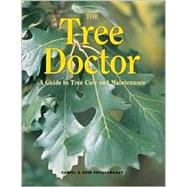
Daniel Prendergast is a professional arborist who has worked for one of North America's largest tree care companies and is a certified member of the International Society of Arboriculture.
Erin Prendergast works at the Art Gallery of Ontario.
| The Benefits of Trees | p. 11 |
| Tree Selection and Placement | p. 21 |
| What is a tree? | p. 21 |
| What parts make up a tree? | p. 24 |
| How to choose a healthy tree from a nursery | p. 29 |
| How trees are sold | p. 29 |
| Hardiness rating | p. 32 |
| Important factors to consider when selecting a tree | p. 32 |
| Tree characteristics | p. 35 |
| Planning and design | p. 39 |
| Planting for landscape enhancement and functionality | p. 40 |
| What makes a tree suitable for the city? | p. 43 |
| How you can maintain your street tree | p. 44 |
| Planting and Care After Planting | p. 47 |
| Planting | |
| Soil basics | p. 47 |
| When to plant | p. 48 |
| How to dig a planting hole | p. 49 |
| How to plant | p. 51 |
| Planting trees in aboveground containers | p. 53 |
| Care after planting | |
| Watering | p. 55 |
| Staking | p. 57 |
| Trunk protection | p. 57 |
| Fertilizing | p. 58 |
| Mulch | p. 62 |
| Transplanting mature trees | p. 62 |
| Pruning | p. 65 |
| Reasons for pruning | p. 65 |
| When to prune | p. 67 |
| Before you begin... | p. 67 |
| Pruning tools | p. 70 |
| Proper pruning technique | p. 72 |
| Pruning young trees | p. 73 |
| Pruning mature trees | p. 75 |
| Pruning tips: What not to do | p. 77 |
| Pruning shrubs | p. 78 |
| Diagnosing Plant Problems | p. 85 |
| Biotic and abiotic plant problems | p. 85 |
| How to make a diagnosis | p. 87 |
| Insects | p. 89 |
| Diseases | p. 91 |
| Control measures: Cultural practices | p. 93 |
| Control measures: Alternative pesticides | p. 95 |
| Control measures: Chemical pesticides | p. 96 |
| Protecting Your Trees From Damage | p. 99 |
| Construction and renovation | |
| Prevention of tree injury before and during construction | p. 100 |
| Post-construction repair and maintenance | p. 103 |
| Storm damage and extreme weather conditions | |
| Ensuring tree health throughout the winter | p. 108 |
| When and How to Hire an Arborist | p. 111 |
| Services provided | p. 111 |
| Guidelines for selecting an arborist | p. 118 |
| Contact Information | p. 120 |
| Places and Organizations | p. 124 |
| Glossary | p. 130 |
| References | p. 137 |
| Acknowledgments | p. 140 |
| Index | p. 141 |
| Table of Contents provided by Ingram. All Rights Reserved. |
The New copy of this book will include any supplemental materials advertised. Please check the title of the book to determine if it should include any access cards, study guides, lab manuals, CDs, etc.
The Used, Rental and eBook copies of this book are not guaranteed to include any supplemental materials. Typically, only the book itself is included. This is true even if the title states it includes any access cards, study guides, lab manuals, CDs, etc.